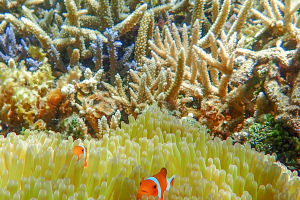Hummingbirds are the smallest birds in the world. There are about 350 known species of hummingbirds, all of which live in the Americas. Distributed in Latin America, north to southern North America, and along the eastern Pacific coast to Alaska.
The smallest hummingbird, weighing just 1.8 grams, is the smallest bird in the world and is found in Cuba.
The evolution of hummingbirds remains a mystery because their skeletons are too small to be preserved as fossils. Hummingbirds mostly live in Central and South America, where fossils dating back one million years have been found, so scientists believe that hummingbirds originated from the Pleistocene.
But scientists in southern Germany have discovered the world's oldest hummingbird fossil, dating back more than 30 million years, suggesting that hummingbird ancestors may have been around since the Oligocene Epoch.
Since modern hummingbirds live only in the Americas, how did they get from Eurasia to South America? Given their intense energy needs, the researchers think they probably followed the Beringian bridge from Eurasia to North America, and then continued their journey to South America.
Once in South America, these nectar-feeding birds settled in and took advantage of many different habitats that provided them with nectar resources, then diversified rapidly into nine major groups containing hundreds of species. The bird moved back to North America about 120,000 years ago and then invaded the Caribbean about five million years ago (at least five times).
Genetic analysis shows that hummingbird diversity continues to rise and grow today, with the generation of new species outpacing the rate of extinction. The entire hummingbird family is listed on The IUCN Red List.
Hummingbirds are also the only birds in the world that can fly upside down. Because of biological evolution, hummingbirds need to rely on nectar to survive, but for light petals, hummingbirds, although slim, still appear bulky, and difficult to attach to the petals like bees and butterflies.
At this time, they need to rely on flying to maintain the balance of the body but also rely on flying before and after to adjust their flight Angle and position, which can be more convenient to absorb nectar.
Hummingbirds fly up and down even when they are feeding on nectar. Their bodies remain vertical, and their wings vibrate back and forth instead of up and down. In addition, to the hummingbird's small weight, the need for airlift is also small, and air resistance is not encountered.
Hummingbirds owe this extraordinary ability to their special muscle tissue and wing structure. The hummingbird's shoulder joint is very flexible and its wings can rotate to the maximum, allowing it to fly backward and take off and land vertically. And because hummingbirds' pectoral muscles occupy a larger proportion of their bodies than other birds' pectoral muscles, they have a strong ability to vibrate their wings.
What's more, while birds can only use the muscles at the proximal end of their wings but not at the farther end, hummingbirds can use both.


